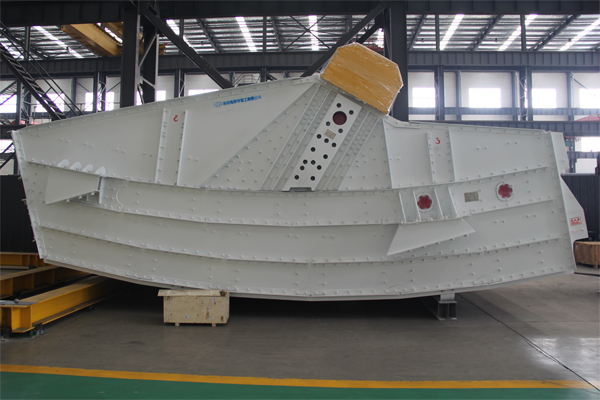Slow discharge from a linear vibrating screen is a common issue that can significantly reduce screening efficiency and overall plant productivity. It means material is not moving across and off the screen deck as quickly as it should.
Reasons and solutions for slow discharge of linear vibrating screen

I. Reasons Related to the Screen Mesh & Deck:
Blinding or Pegging of the Screen Mesh:
Reason: Fine particles get stuck in the openings of the screen mesh (blinding), or near-size particles get wedged in the openings (pegging). This reduces the effective open area, slowing down the passage of undersize material and causing oversize material to build up and discharge slowly.
Solution:
Regular Cleaning: Manually clean the mesh with brushes, pressure washers, or air lances.
Anti-Blinding Devices: Install bouncing balls, slider rings, or polyurethane stars beneath the screen mesh. These continuously tap the mesh from below, dislodging stuck particles.
Ultrasonic De-blinding Systems: For very fine or difficult materials, ultrasonic systems vibrate the mesh at high frequencies, preventing blinding.
Self-Cleaning Mesh: Use specialized screen media with flexible wires that vibrate independently to dislodge particles.
Adjust Mesh Tension: Ensure the mesh is properly tensioned. Sagging mesh can exacerbate blinding.
Incorrect Screen Mesh Aperture (Opening Size):
Reason: If the mesh openings are too small for the desired separation or for the bulk of the material, it will naturally process material slowly.
Solution:
Re-evaluate Application: Ensure the chosen mesh size is appropriate for the material characteristics and the desired cut point.
Consider a Coarser Mesh: If possible and acceptable for the product, use a slightly larger mesh opening.
Worn or Damaged Screen Mesh:
Reason: Torn, stretched, or excessively worn mesh can lose its tension, sag, and have inconsistent openings. This can lead to material pooling in areas and inefficient conveying.
Solution:
Inspect and Replace: Regularly inspect the mesh for wear and tear. Replace damaged sections or the entire mesh panel as needed.
Insufficient Screening Area:
Reason: The screen might be too small for the volume of material being fed onto it, leading to overloading.
Solution:
Reduce Feed Rate: If possible, reduce the amount of material being fed to the screen.
Upgrade Screen Size: If the feed rate cannot be reduced, a larger screen or an additional screen may be necessary.
Sagging Screen Mesh:
Reason: Improper tensioning or wear can cause the mesh to sag. Material accumulates in the sagged areas, slowing its progress.
Solution:
Proper Tensioning: Ensure all tensioning bolts and mechanisms are correctly adjusted according to the manufacturer’s specifications.
Support Bars: Check if support bars beneath the mesh are adequate and in good condition.
II. Reasons Related to Vibration Parameters:

Incorrect Stroke (Amplitude):
Reason: If the stroke (the distance the screen moves with each vibration) is too small, the material won’t be lifted and thrown forward effectively, especially coarser or heavier materials.
…
More about linear vibrating screen discharge slow detailed fine information can be clicked to visit: https://www.hsd-industry.com/news/linear-vibrating-screen-discharges-slowly/

